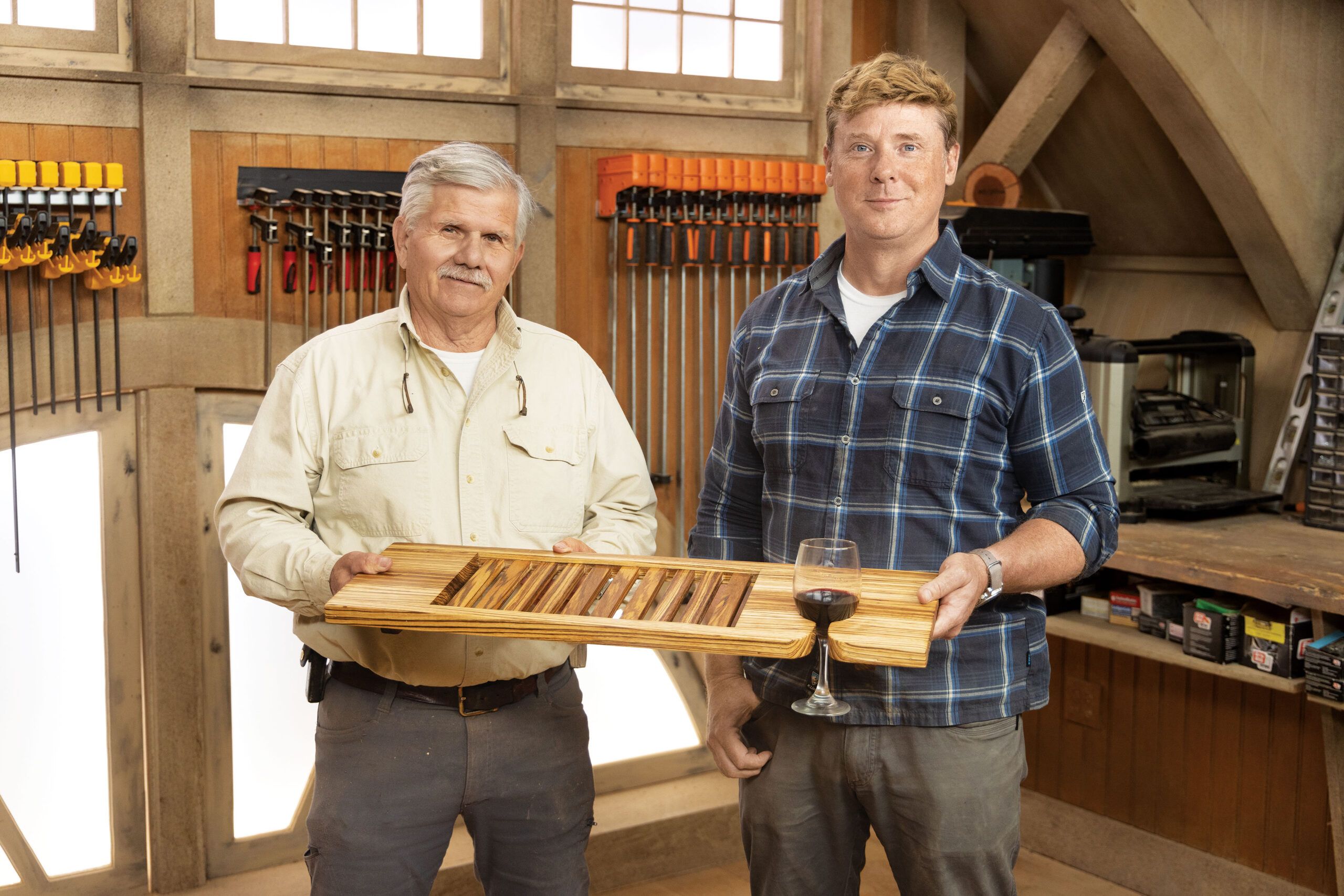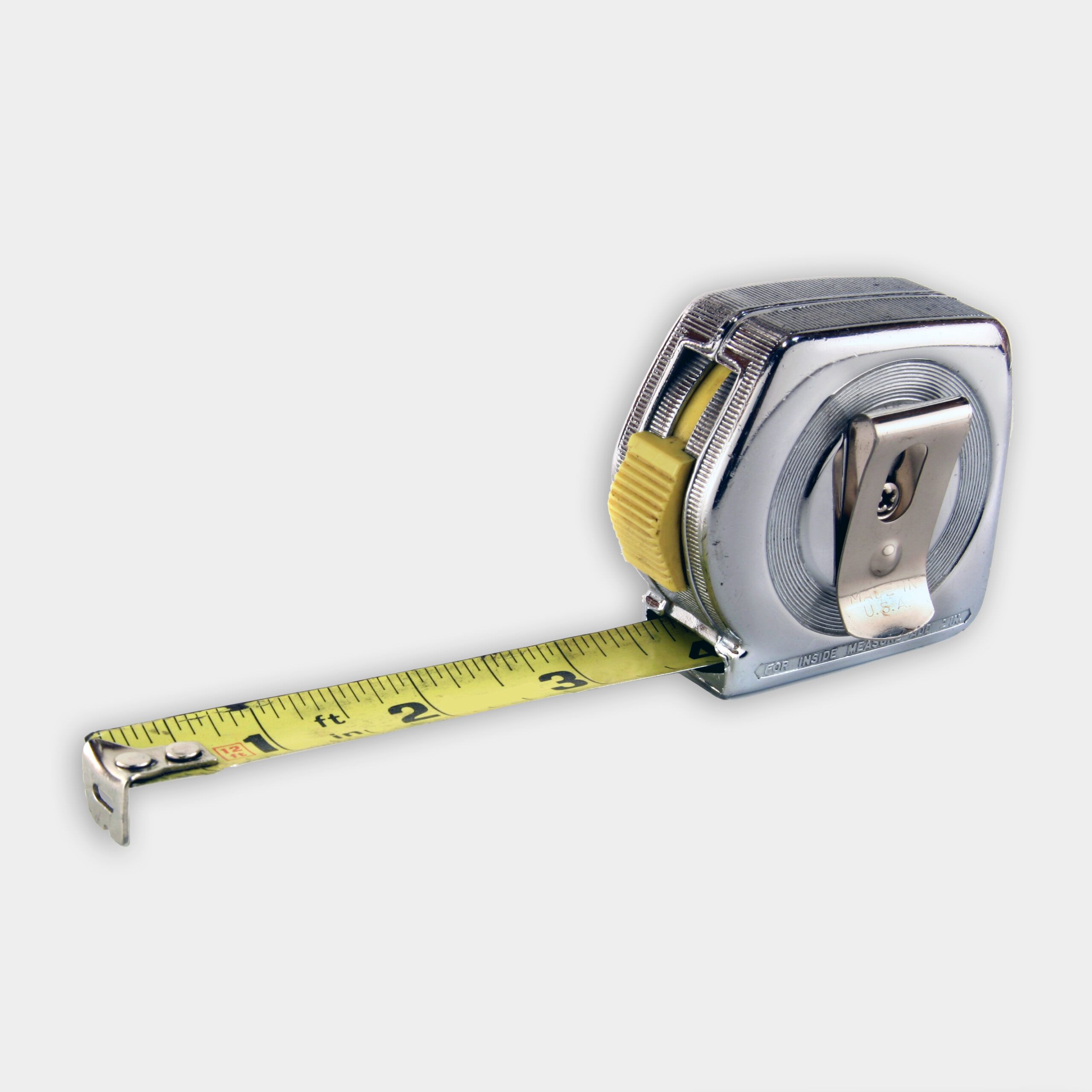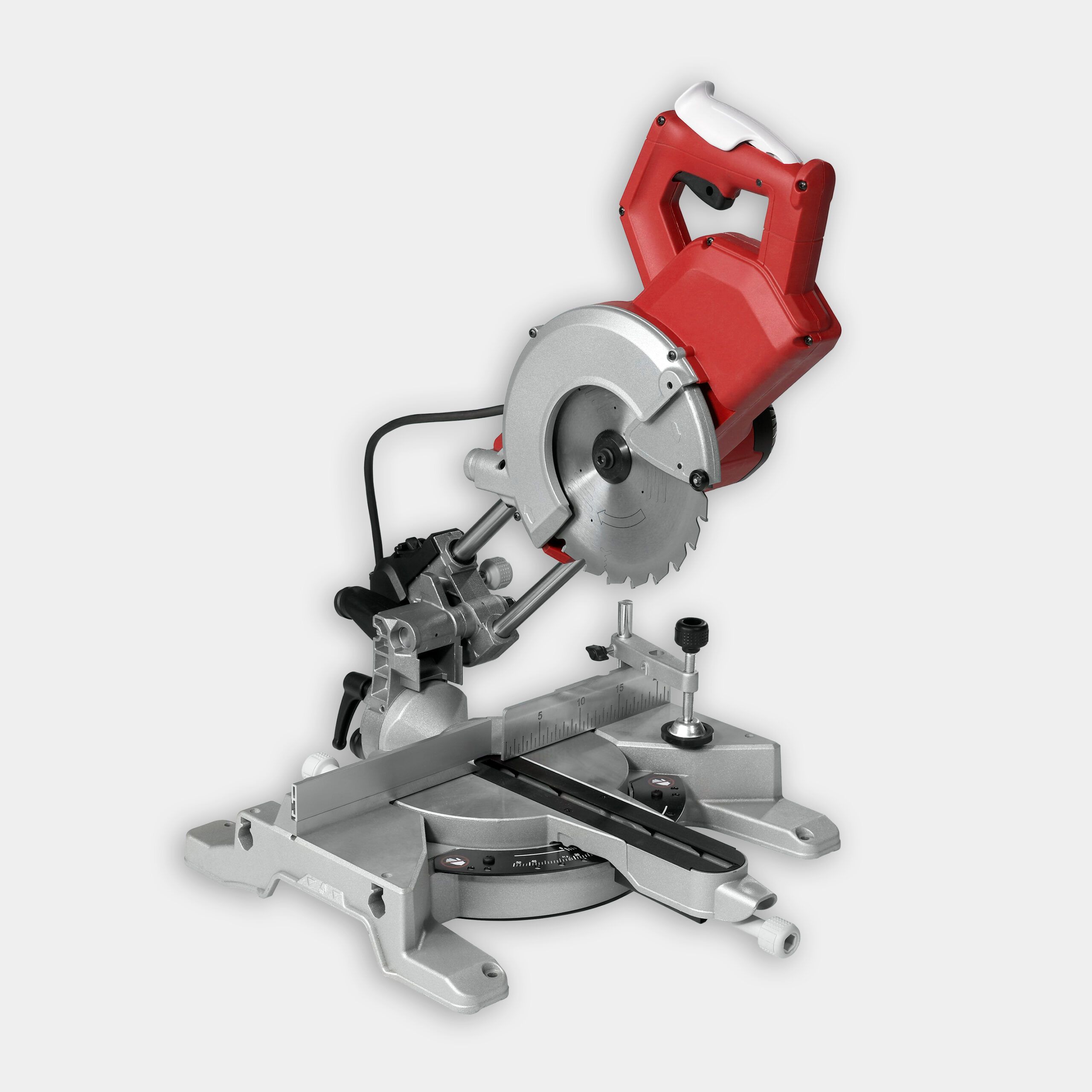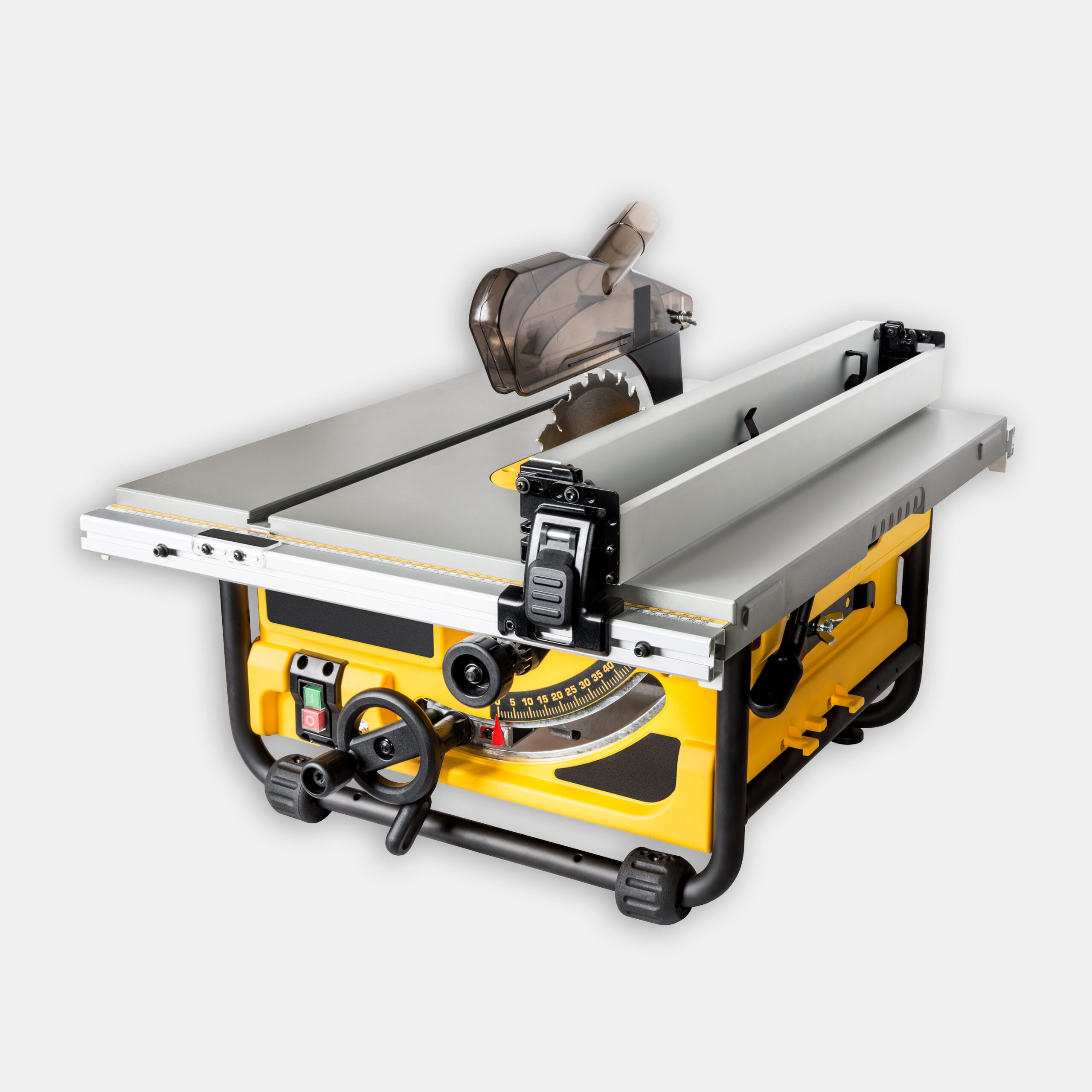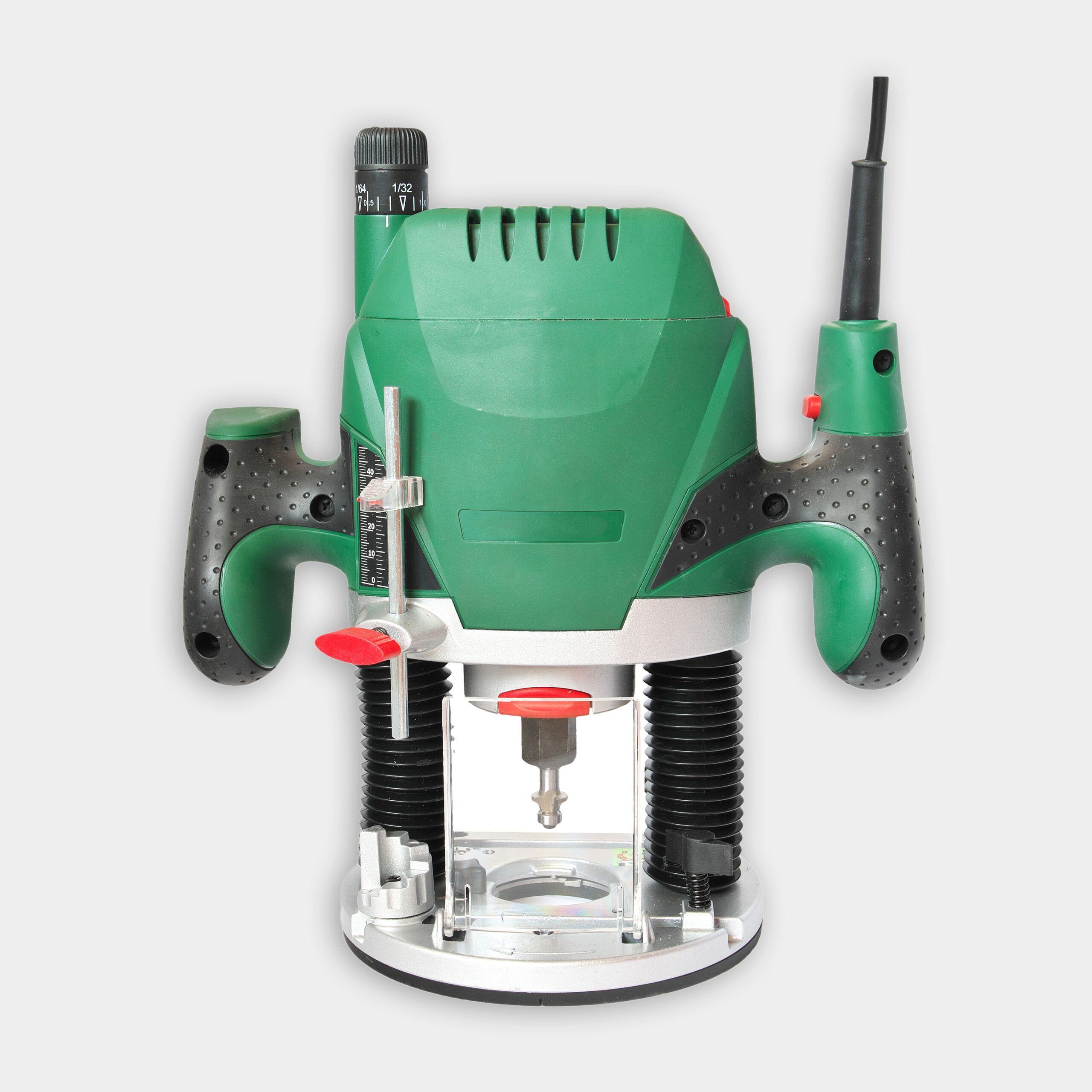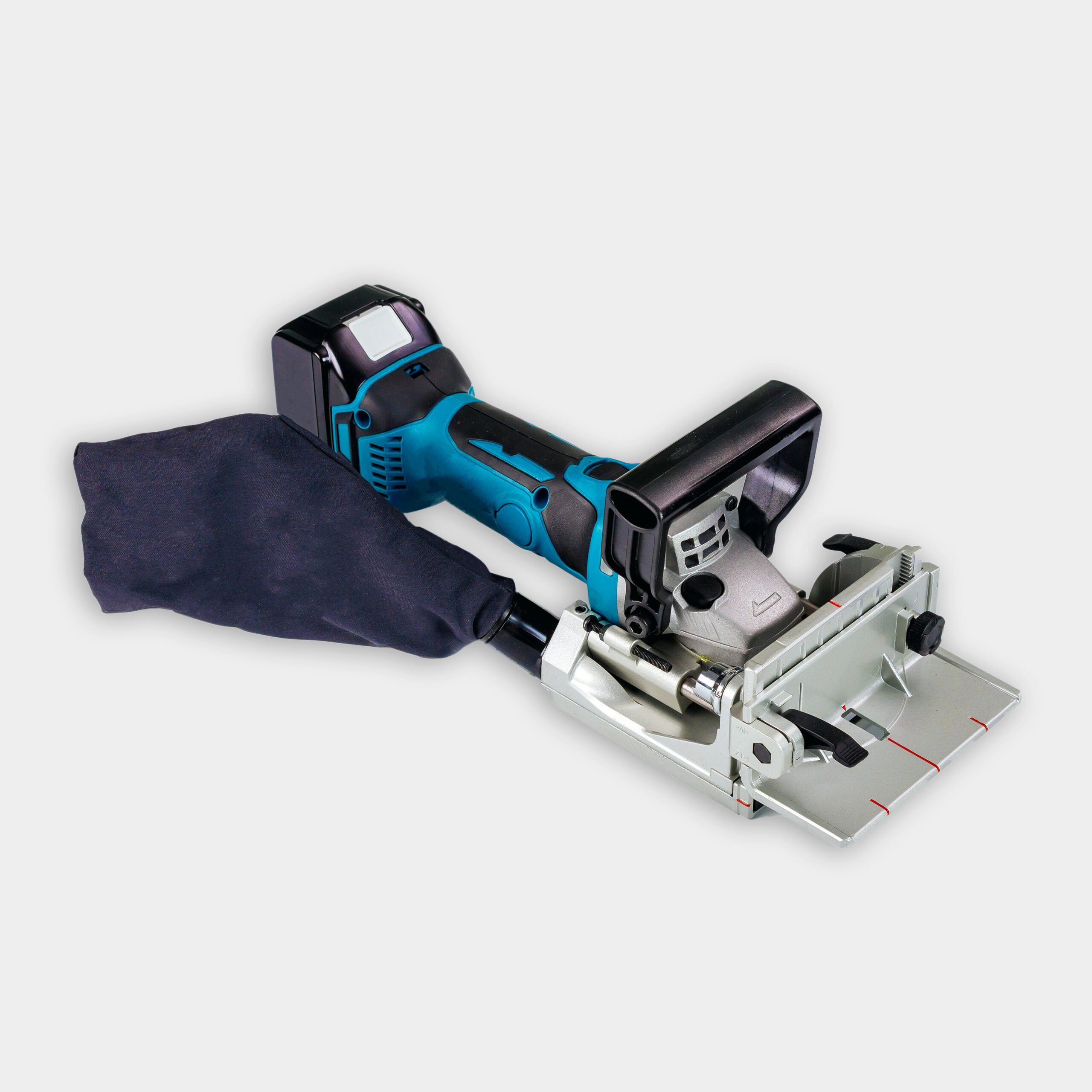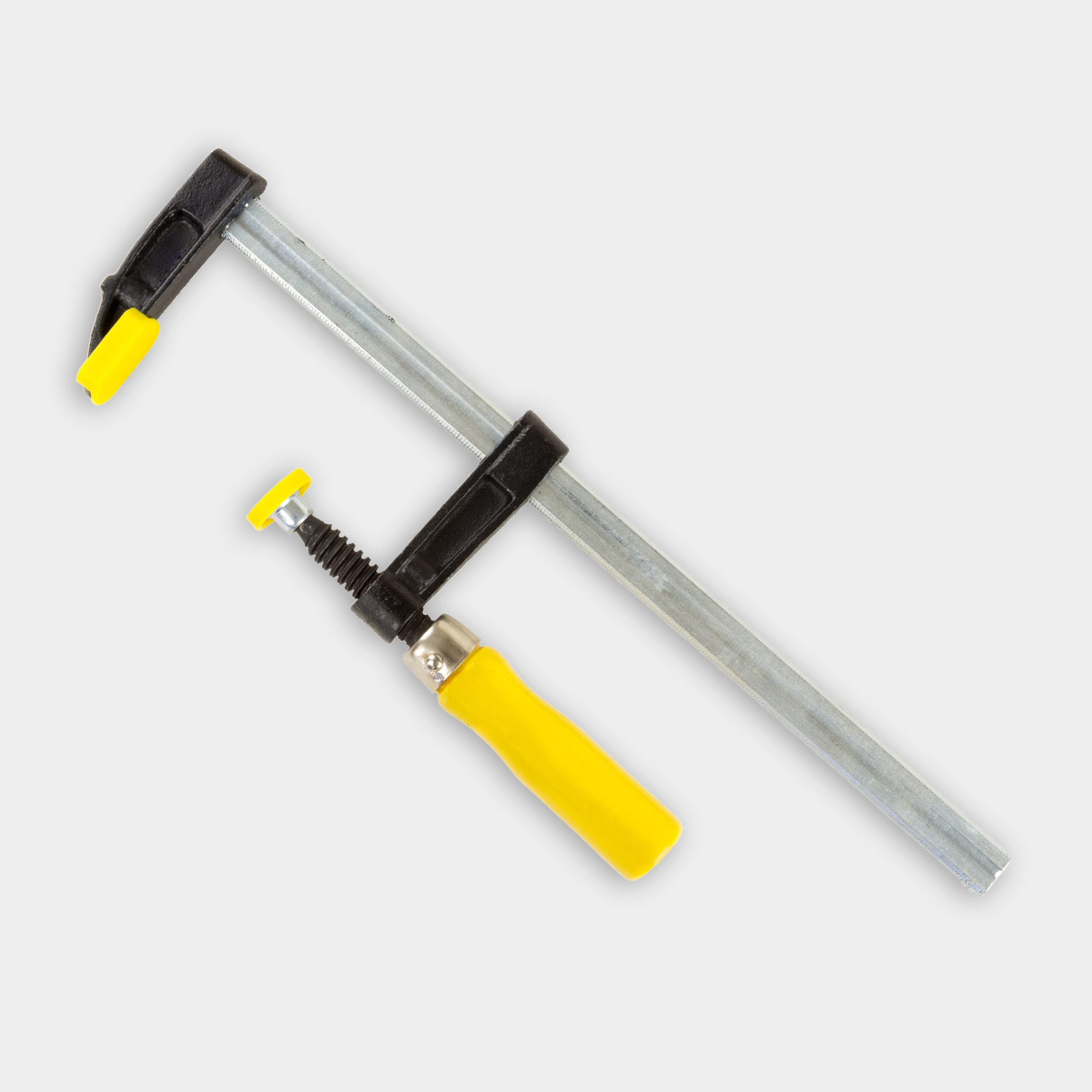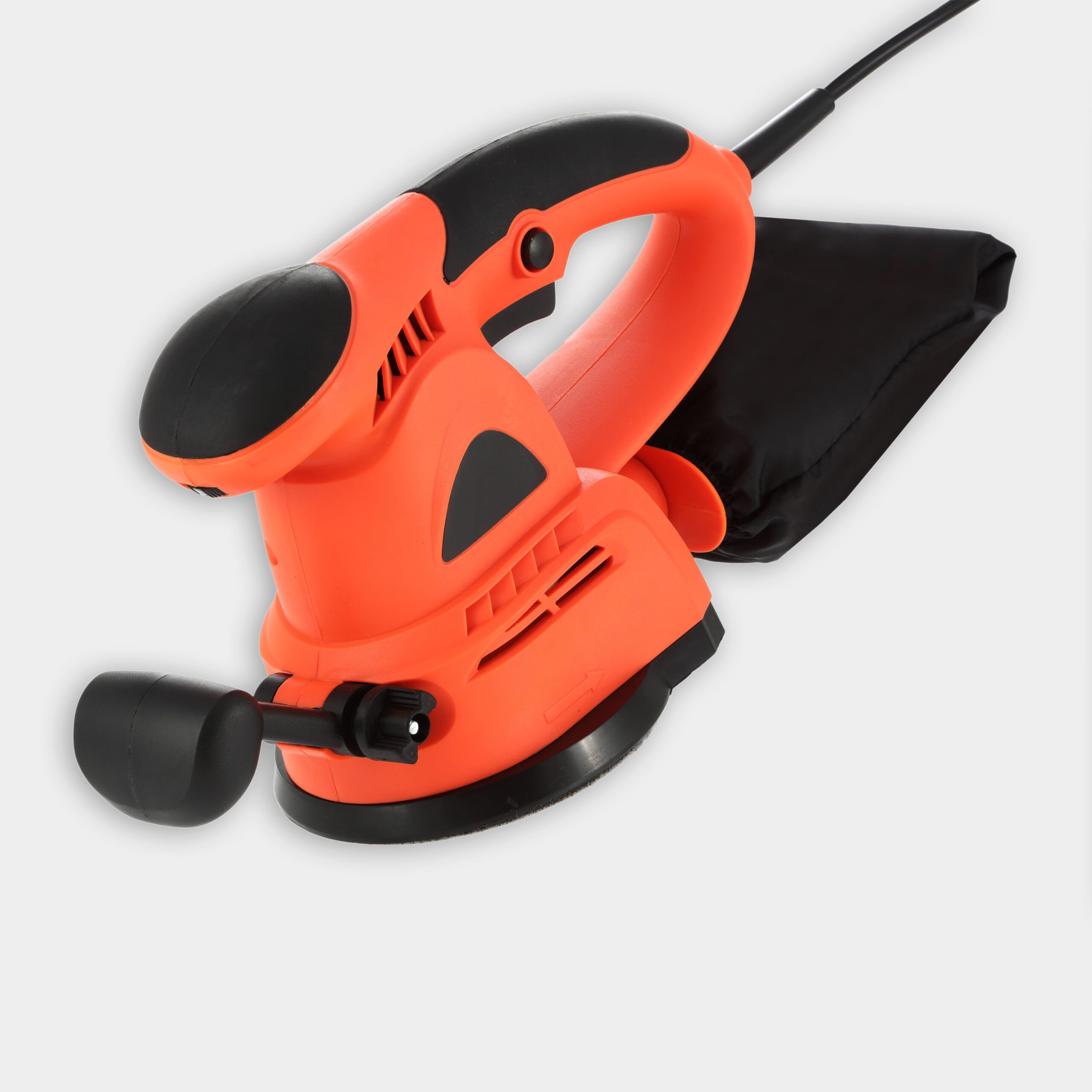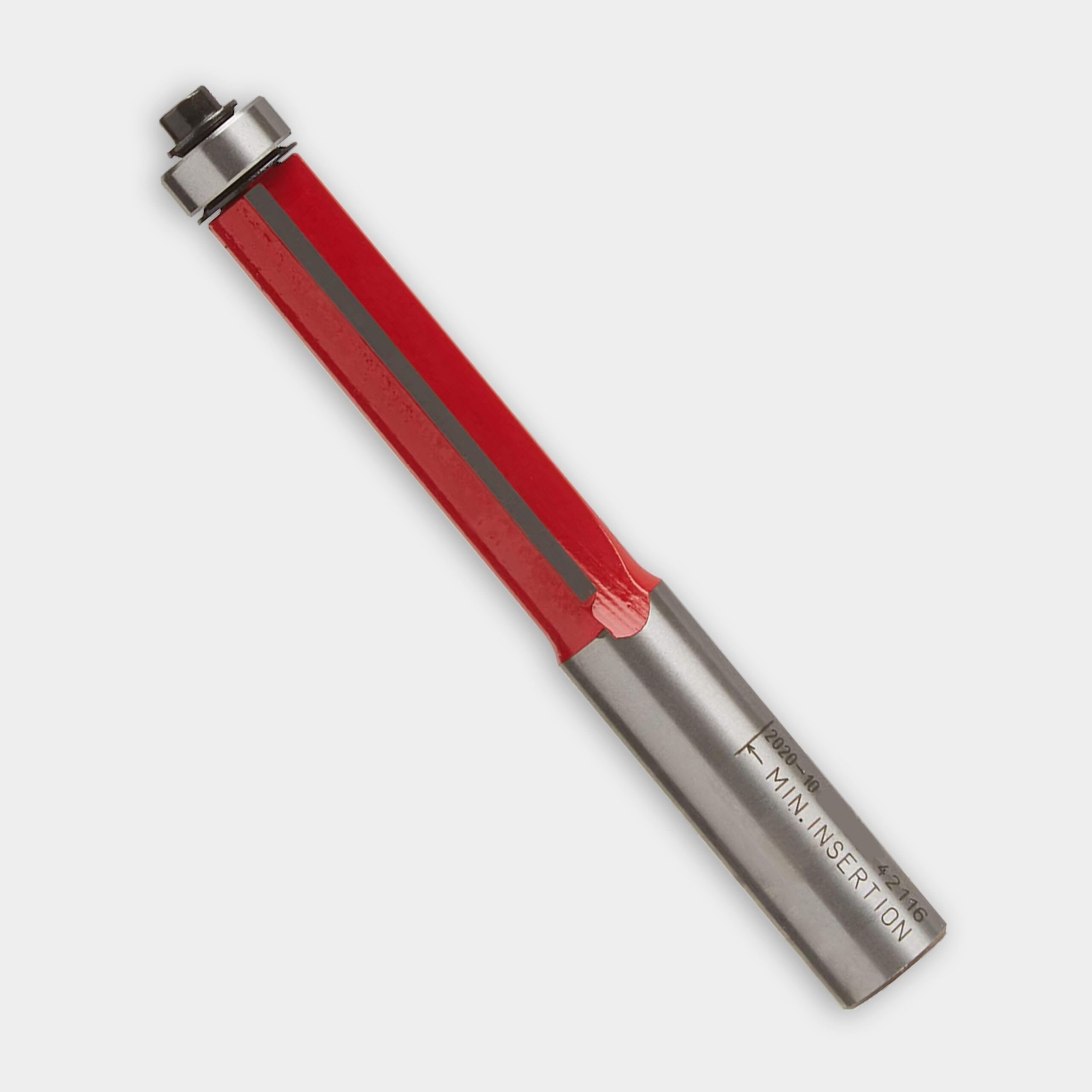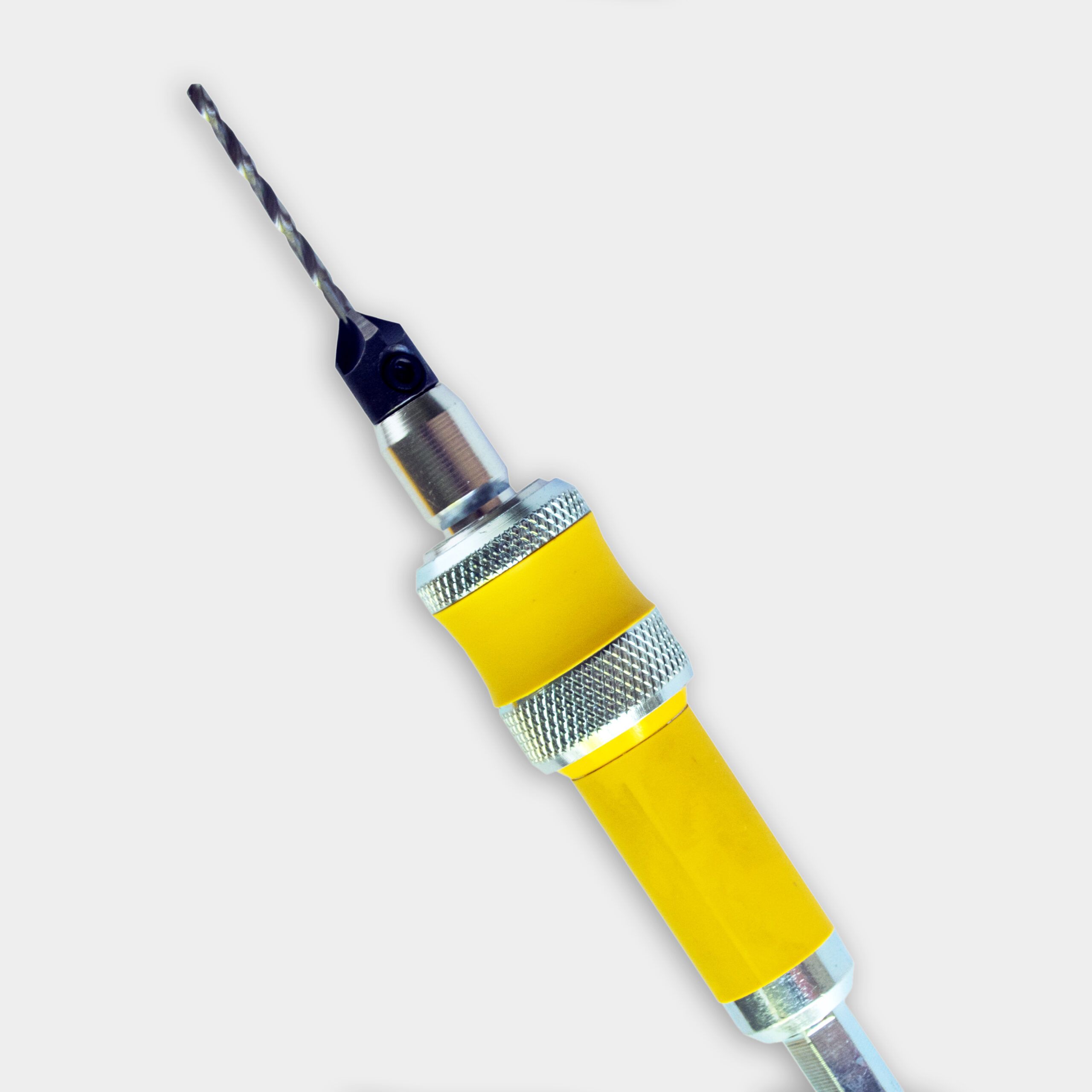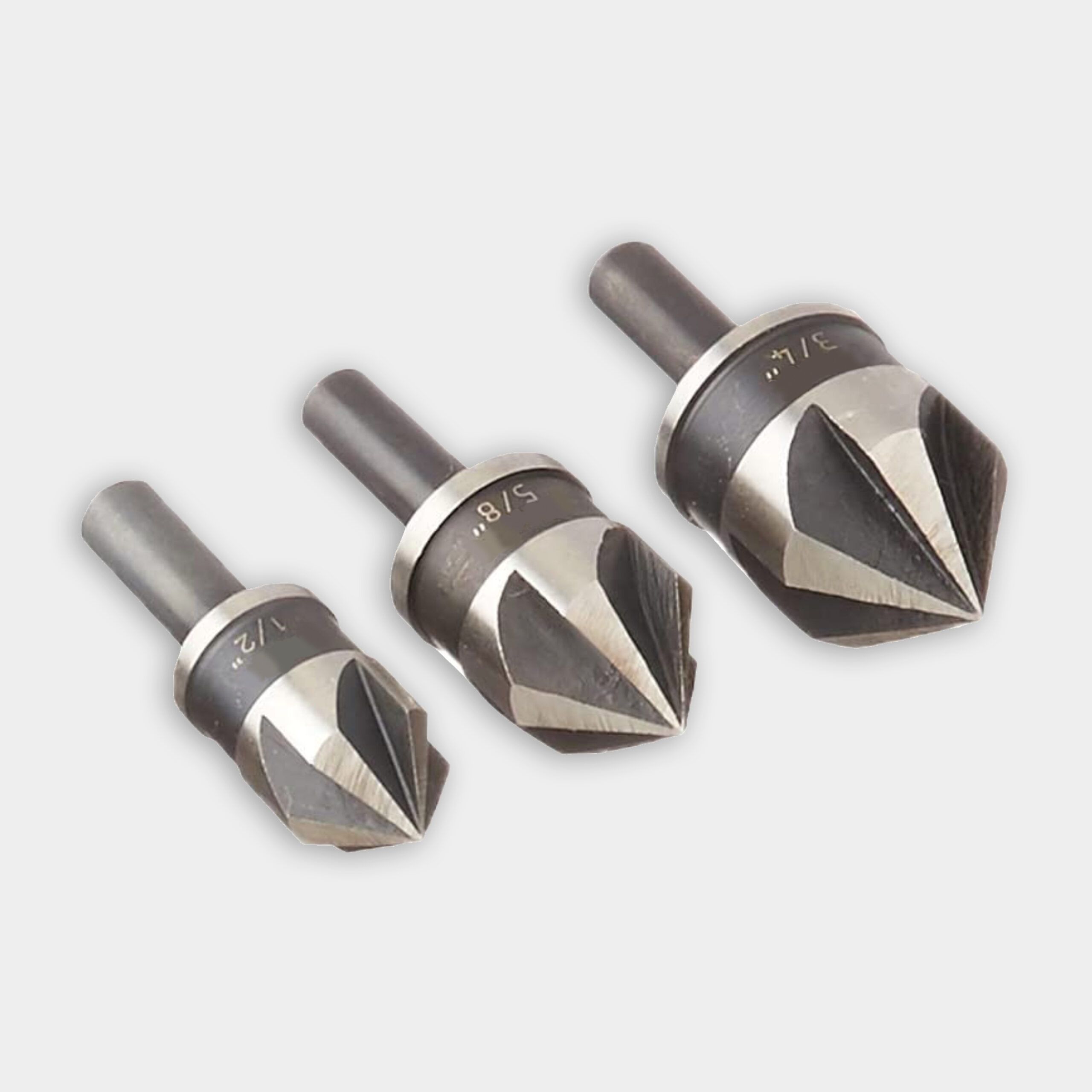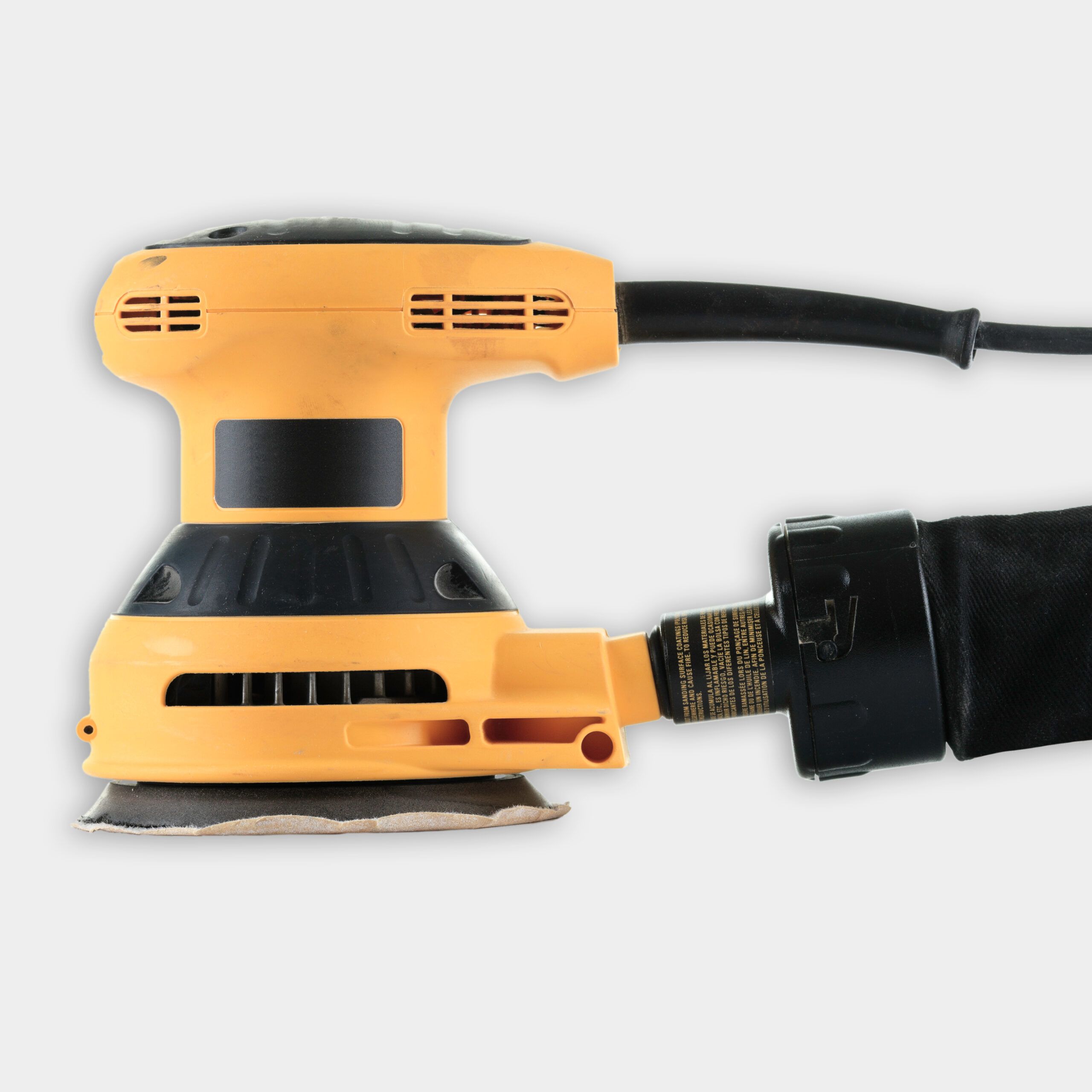We may be compensated if you purchase through links on our website. Our team is committed to delivering honest, objective, and independent reviews on home products and services.
There’s nothing better than slipping into a hot bath at the end of a hectic day. To create an even more relaxing atmosphere, some people like to read a book or sip a cup of tea while they soak, but they may not have anywhere to put their stuff. A bathtub tray fixes that problem. This convenient surface can store all of your bathtime essentials, such as wine glasses, books, or bath accessories. In our visual guide, we’ll show you how to build a bathtub tray. This Old House experts Tom Silva and Kevin O’Connor construct a durable and stylish bathtub tray in the video above.
Choosing the Right Wood for the Tray
A bathtub tray has to withstand moisture, so use a water-resistant wood for this project. We’ve listed a few options and their distinct qualities below:
- African zebrawood: This wood is very dense and resistant to water, and it has a striking grain pattern. Silva chose this wood for his project.
- Ipe: Ipe is another dense wood that resists rot and insect damage. Contractors often use this wood for decking because it holds up well in high-moisture environments.
- Mahogany: This is a popular hardwood for woodworking projects because of its rich color and resistance to water.
- Teak: Teak has natural oils that make it resistant to water and decay. It’s a favorite among woodworkers because of its beautiful color and grain.
- Tigerwood: This wood is dense and durable, and it has a unique, stripy appearance that can add a touch of elegance to your bathroom.
You can find these woods at specialty hardwood stores, premium decking retailers, or online suppliers. Make sure you order at least 15% more stock than what your project requires. This will give you a little extra for optimal grain selection and in case you make a mistake when cutting the wood.
Materials and Tools Needed for a Bathtub Tray
Before you get started, make sure you have all the tools and materials for this project. This will allow you to work efficiently.
Materials
Here are the materials you’ll need for the project:
- 1/2-inch thick plywood (for template)
- 1 1/4-inch stainless steel screws
- Cyanoacrylate (CA) glue and activator
- Double-sided tape
- Exterior wood glue
- One 7⁄8-by-8-by-60-inch board of chosen wood
- Painter’s tape
- Sandpaper (120-, 150-, and 220-grit)
- Six 5-by-30mm loose tenons
- Water-resistant finish (optional)
Tools
Gather the following tools:
- 2 3/4-inch hole saw
- Clamps
- Countersink bit
- Detail sander
- Drill/driver with assorted bits
- Jigsaw
- Miter saw
- Random-orbit sander
- Table saw
- Tape measure
- Tenon joiner
- Template router bit
- Trim and plunge router
Before You Start Building Your Bathtub Tray
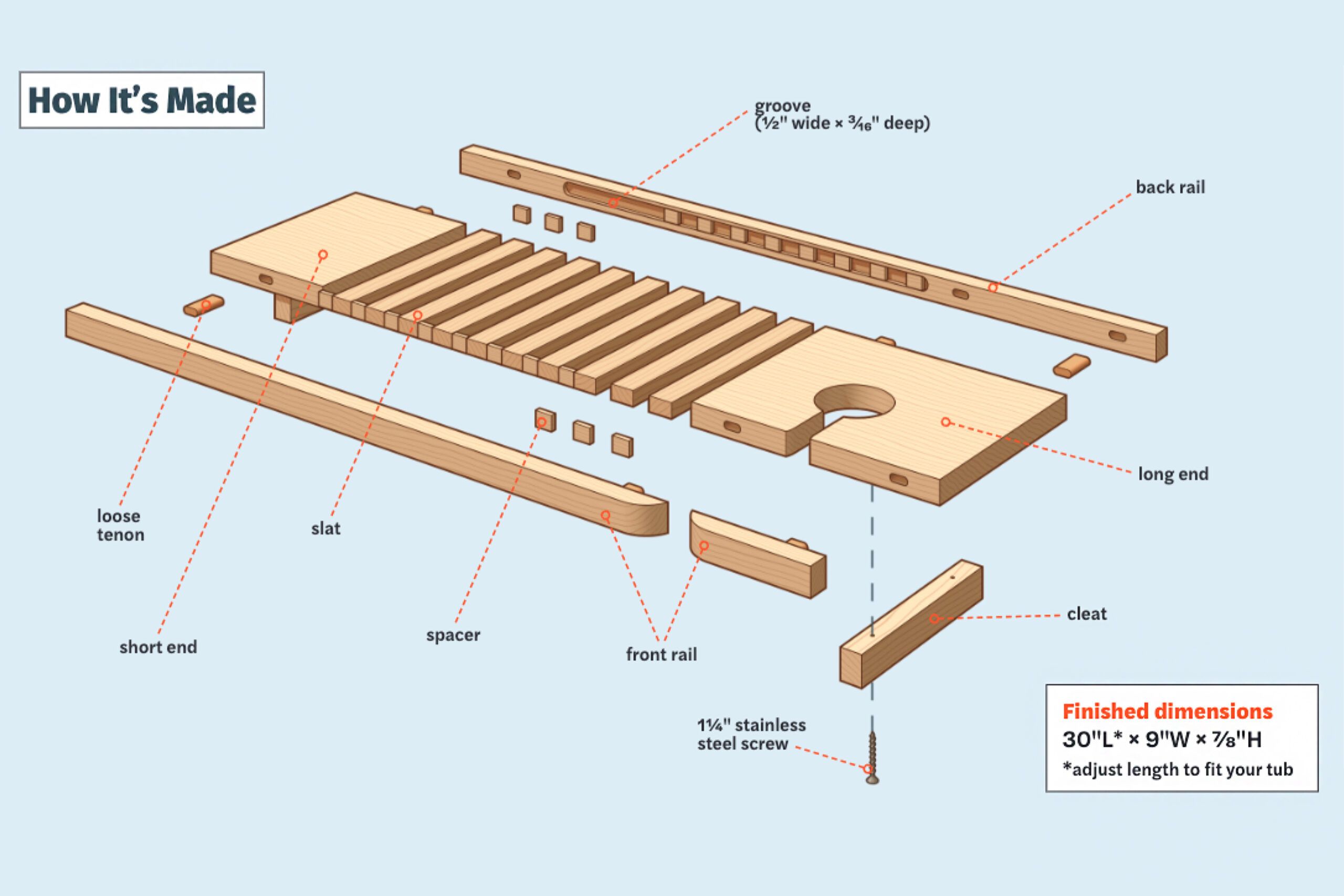
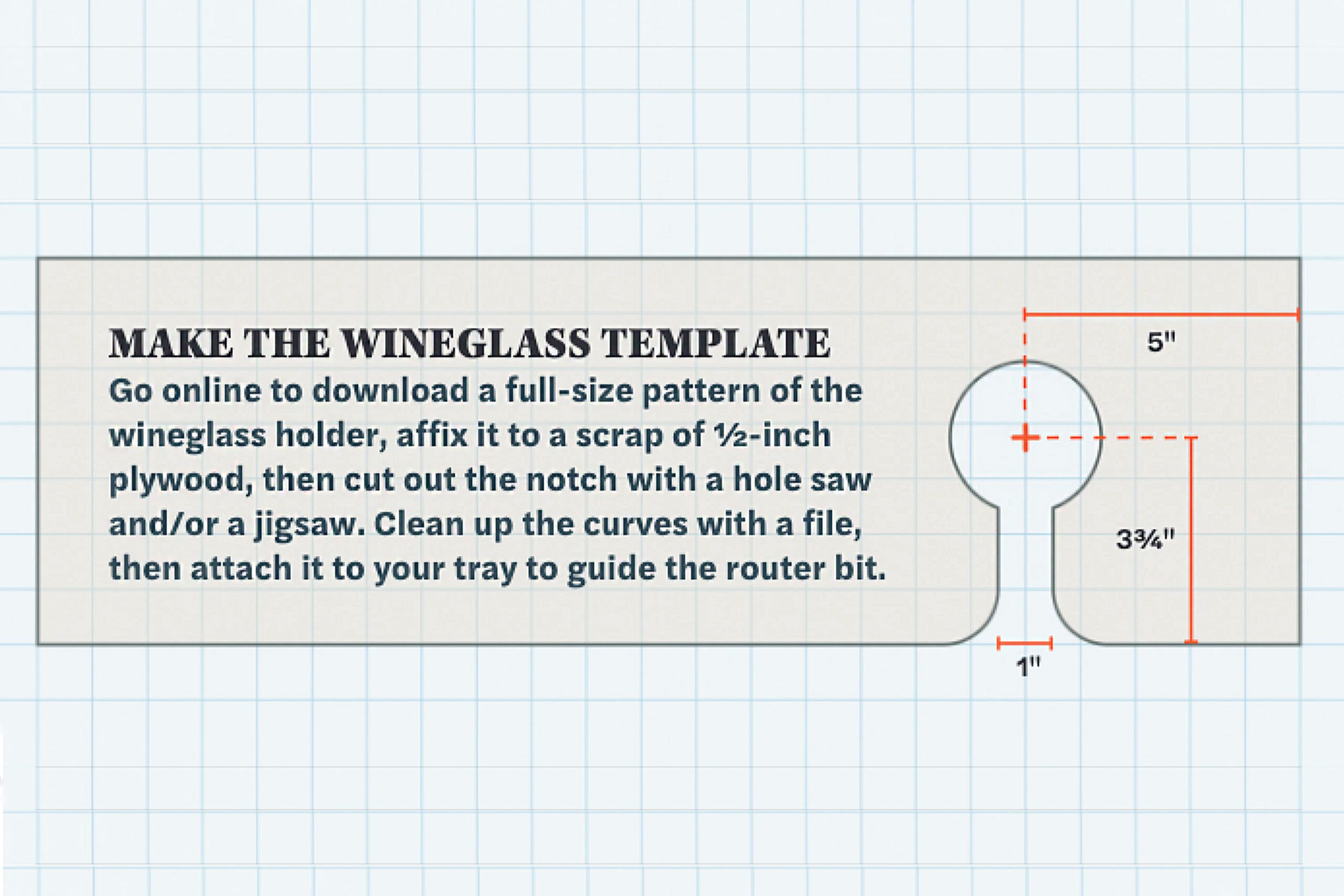
Template: Use this pattern of the wineglass holder, affix it to a scrap of 1/2-inch plywood, then cut out the notch with a hole saw and/or a jigsaw. Clean the curves with a file, then attach it to your tray to guide the router bit.
Now you can get started.
Step 1: Prepare the Tray Wood

Before cutting the wood, measure your bathtub from side to side to figure out how long your tray needs to be. Use a table saw to rip the parts to width according to your measurements. Cut an extra rail for test cuts. Use a miter saw to cut the parts to length, but leave the rails about 1/2 inch longer than needed.
Adjusting for Wood Characteristics
You may run into a few issues when you make your cuts based on the wood you use. Here are some examples and how to account for them:
- African zebrawood: Silva found this interlocking grain was prone to splintering unless his blades and bits were razor-sharp. Make slow, steady cuts, and use sharp blades.
- Mahogany: This wood is prone to splitting when mishandled because it’s so smooth. Avoid wasting it by making precise measurements.
- Teak: This wood’s natural oils may gum up your blades. Clean your tools regularly while cutting.
Step 2: Cut the Dado for the Bathtub Tray
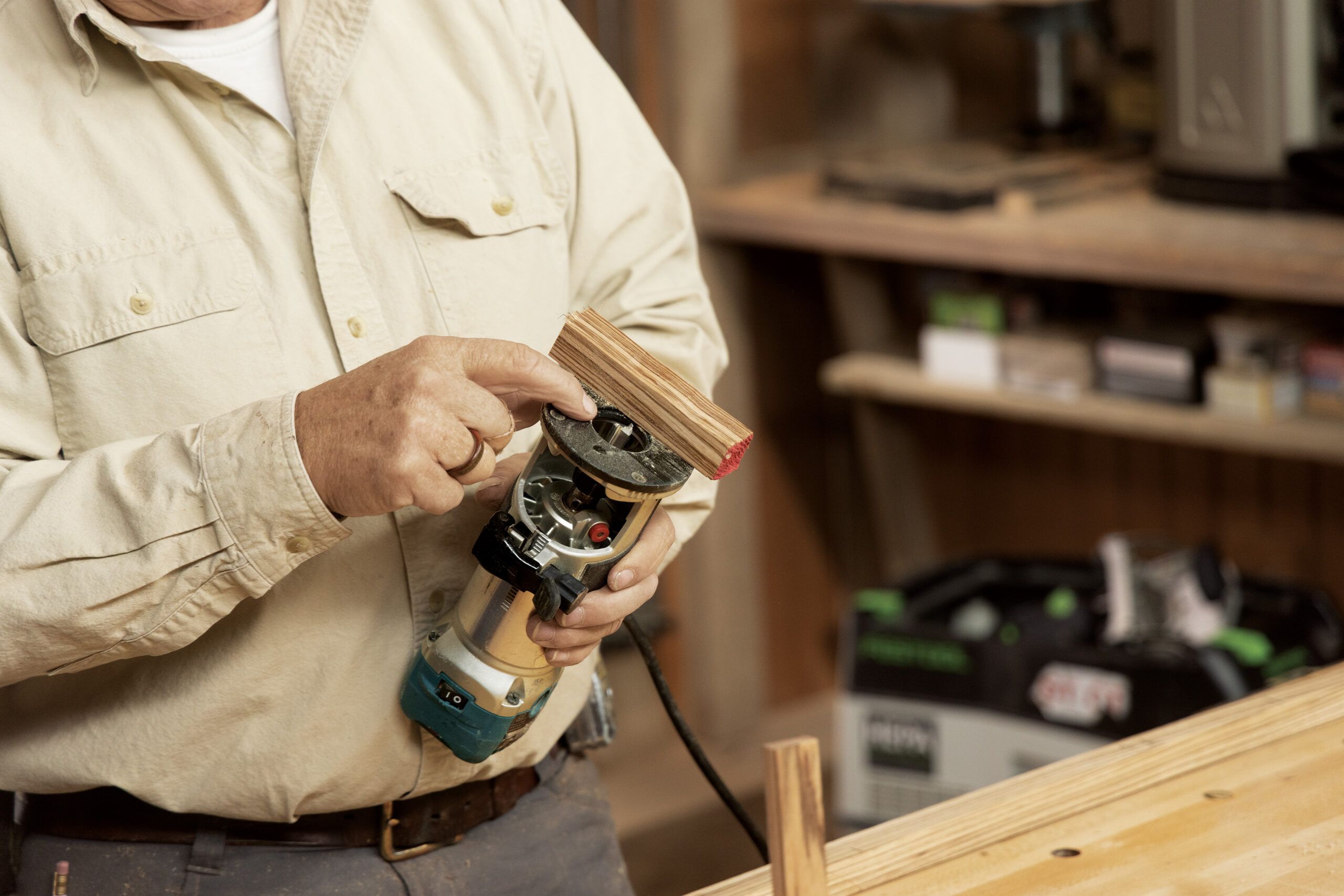
You’ll need a shelf for the slats. Here’s how to cut a dado, the rectangular groove cut for the slats, along the inside edges of the rails:
- Set up a trim router: Use a 1/2-inch straight bit and adjust the cutting depth to 3/16 inch.
- Create a guide: Cut a 6-inch strip from the extra rail and attach it to the router’s base with double-sided tape, positioned 3/16 inches from the bit. This strip will act as both a fence and a leveling block to guarantee a straight groove in both rails.
- Make a test cut: Check that the groove is centered by making a test cut in the extra rail.
Step 3: Rout the Rails for the Bathtub Tray
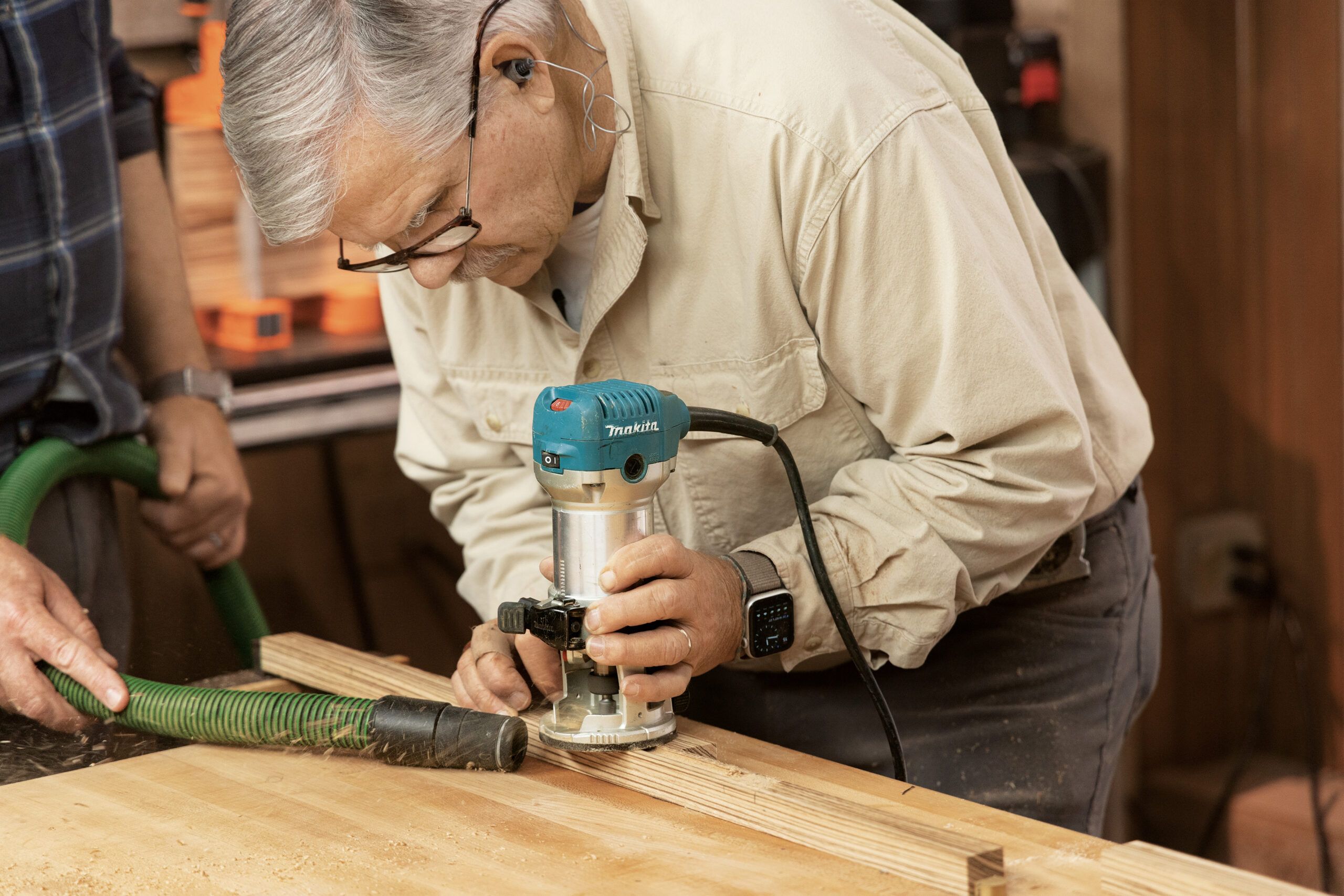
On the inside edges of both rails, mark lines 9-and-1/4 inches from one end and 5-and-5/8 inches from the other. Securely clamp a rail to your workbench, and rout the groove between the marks. Check for consistency by repeating the process for the other rail.
Step 4: Cut the Mortises for the Bathtub Tray
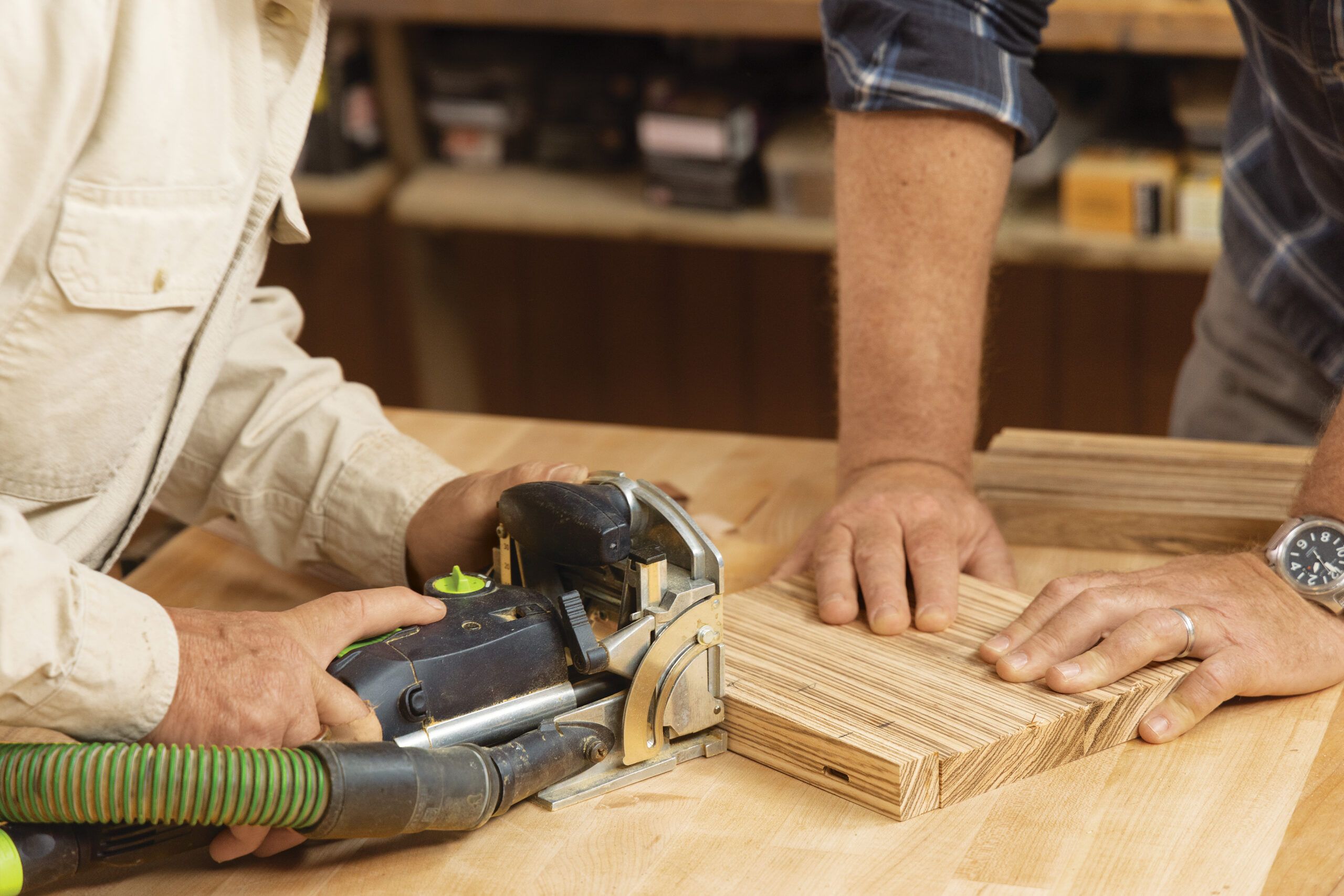
To ensure the rails will be flush with the top face of the tray, flip the rails and end sections so that the good faces rest against the bench, and make mortises for loose tenons where shown in the illustration. (Alternatively, you can use a biscuit joiner.)
Step 5: Smooth and Test-Fit for the Bathtub Tray
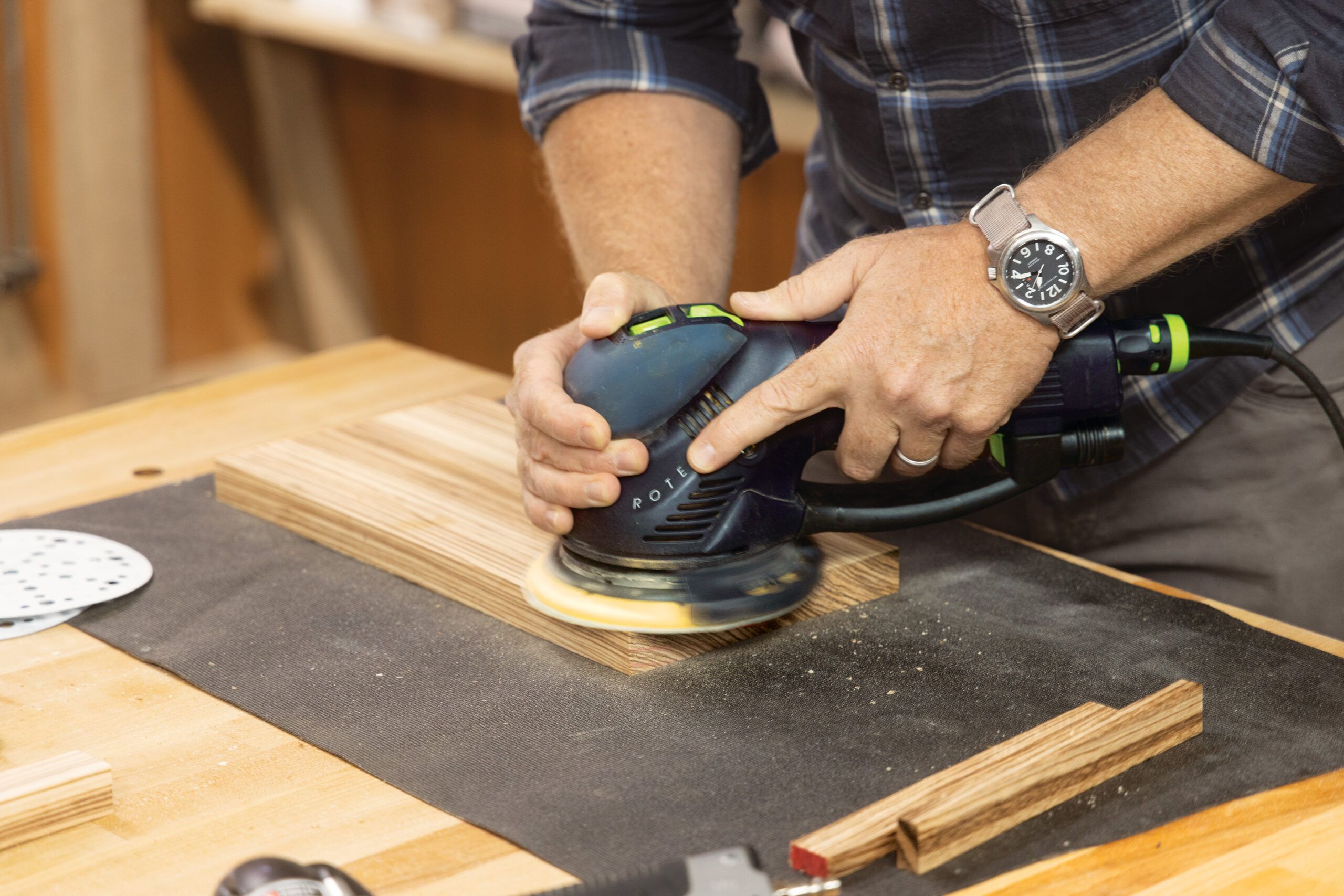
Use a random-orbit sander and 120-grit sandpaper to erase saw marks, then hand-sand with 150-grit to soften any sharp edges. Next, dry-fit the assembly to ensure everything fits together and familiarize yourself with the assembly sequence.
Step 6: Glue the Tray
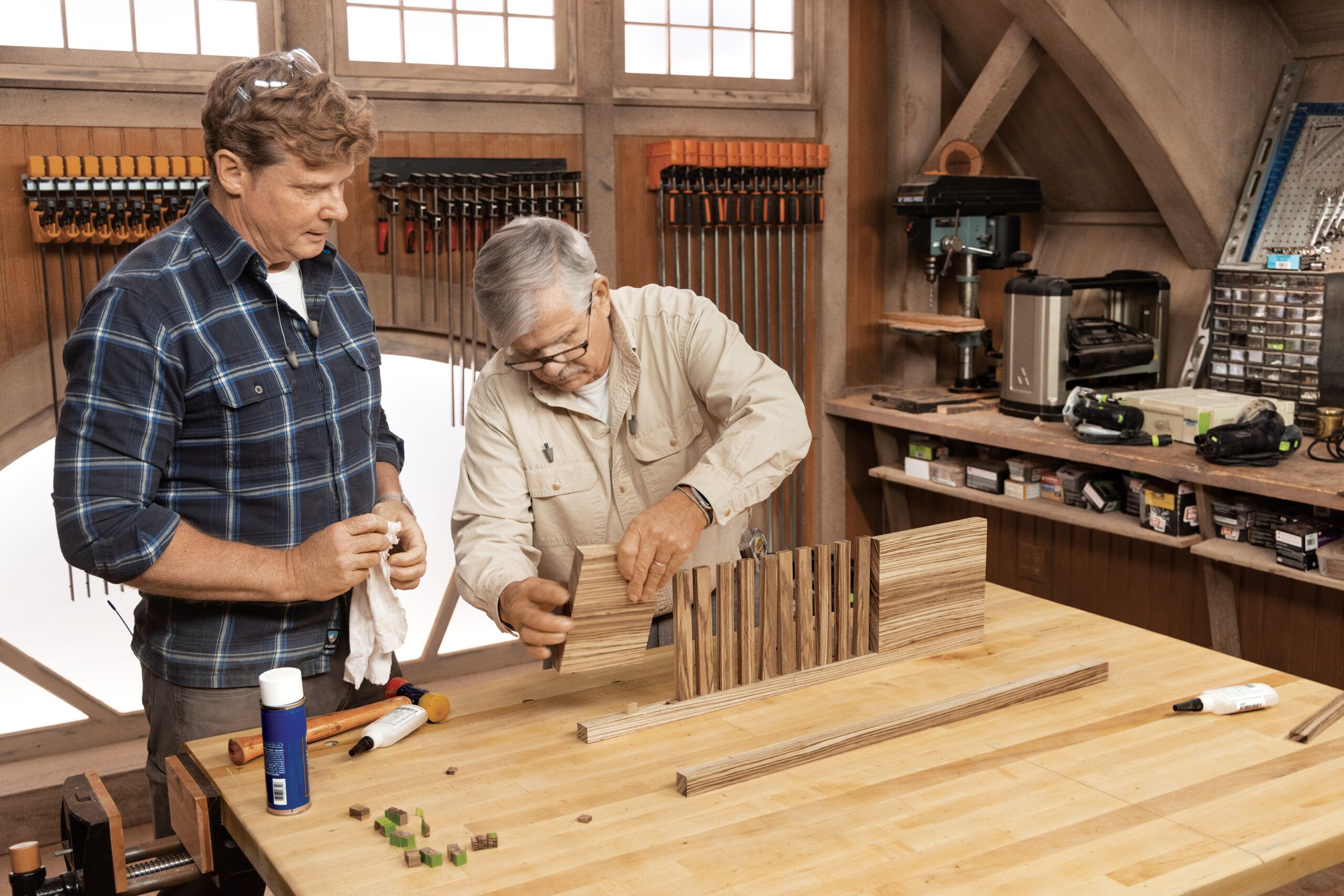
Apply glue to a rail, insert the tenons, and then quickly attach the ends, slats, spacers, and remaining rail. To avoid the chance that the glue could stick or seize in midassembly, insert the slat spacers on the second side of the tray after the rails have been clamped together.
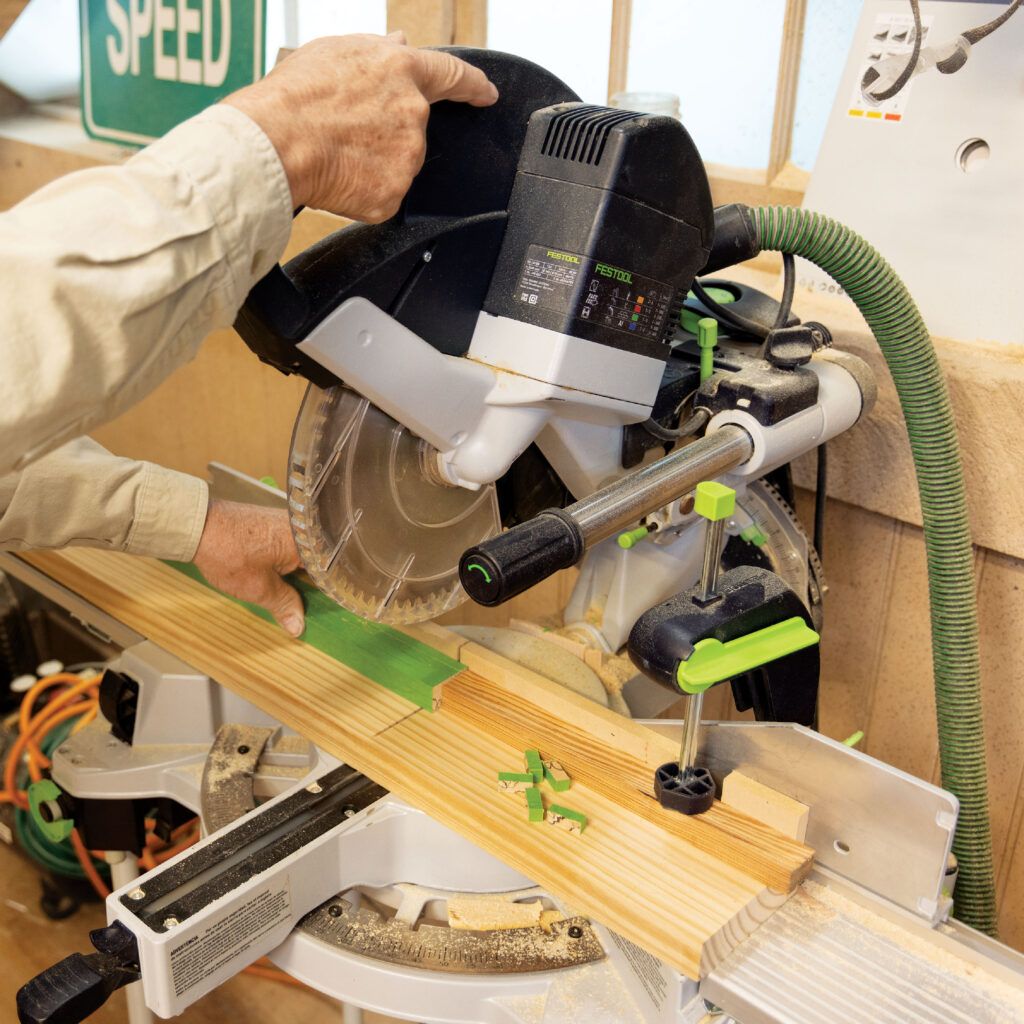
Tip: Backup for Small Parts
Silva built this jig to ensure that the spacers are the same length. It also keeps the blade from grabbing and rocketing small pieces across the shop. Glue two boards together, clamp the assembly to the saw so it bridges both fences, and make a shallow cut to locate the blade position. Measuring from the kerf, attach the stop block and cut the spacers.
Step 7: Cutting the Ends of the Tray
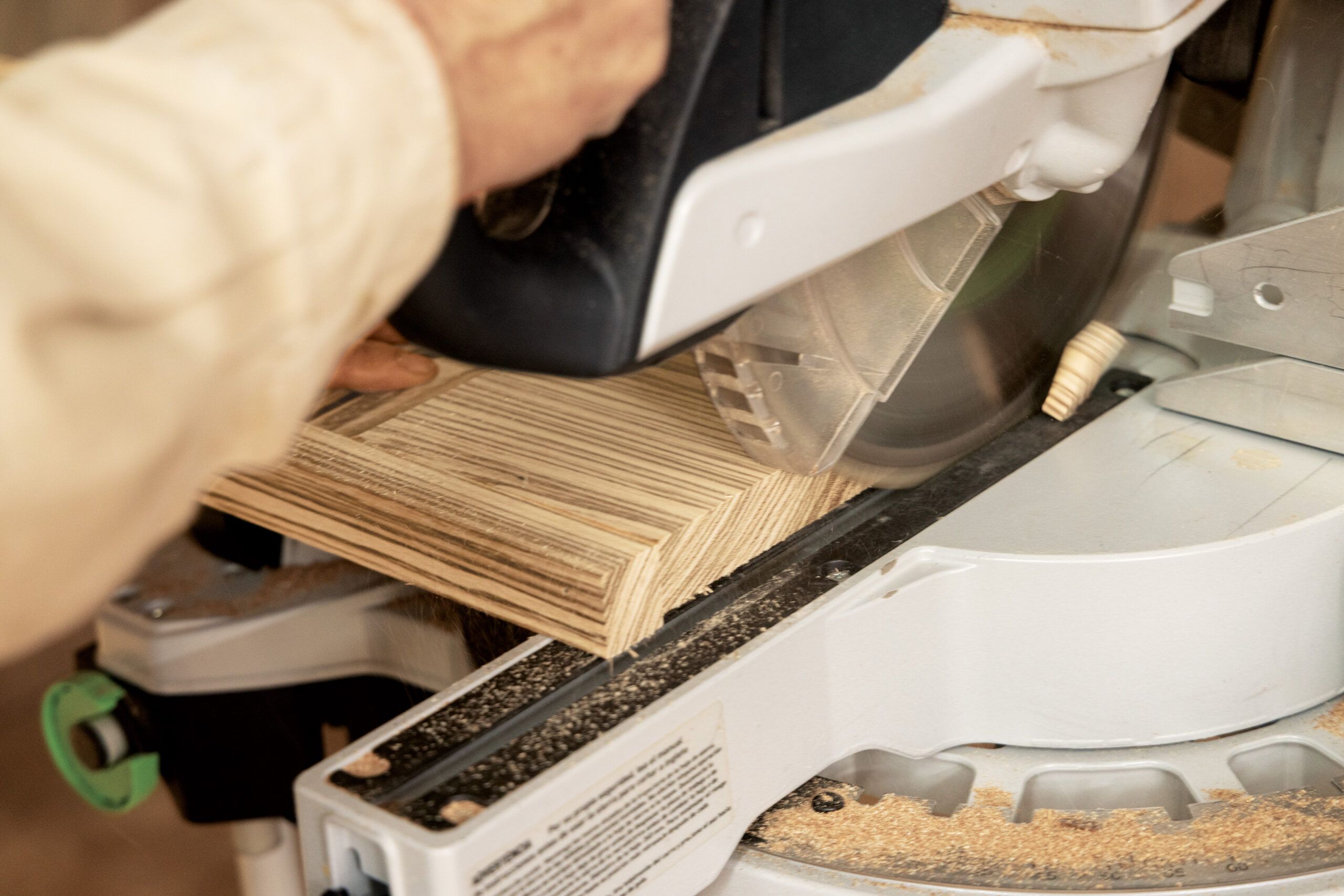
After gluing it together, use a miter saw to cut the rails flush with the ends. In the video, Silva leaves the rails a little longer to provide a margin of error in case there are any issues during the glue-up process.
Step 8: Create the Wine Glass Holder
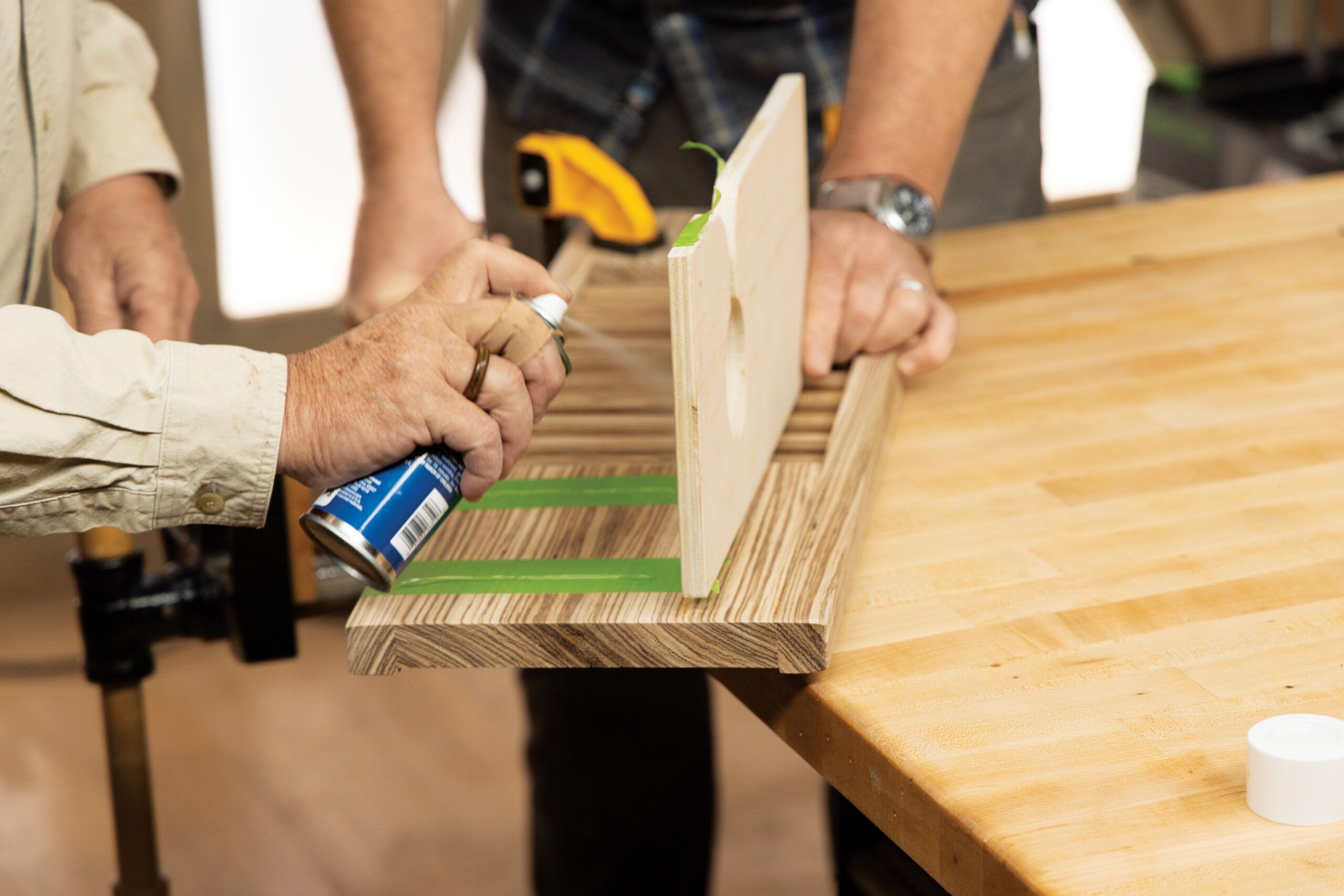
Silva includes a custom wine glass holder in the video. If you’ve decided to add one, follow the instructions below:
- Create a template: Use 1/2-inch plywood and cut out a notch with a hole saw or jigsaw (see the template tip above).
- Position the template: Place it flush with the front rail so that the notch starts 3-and-5/8 inches from the edge of the long end. Since clamps could interfere with the router, tilt the template up and attach it with two long strips of painter’s tape, creating a hinge.
- Attach the template: Apply a few drops of CA glue on the bottom strips and a spritz of activator on the top. Fold the template into position, and apply pressure for a few seconds.
Step 9: Rout the Notch for a Bathtub Tray
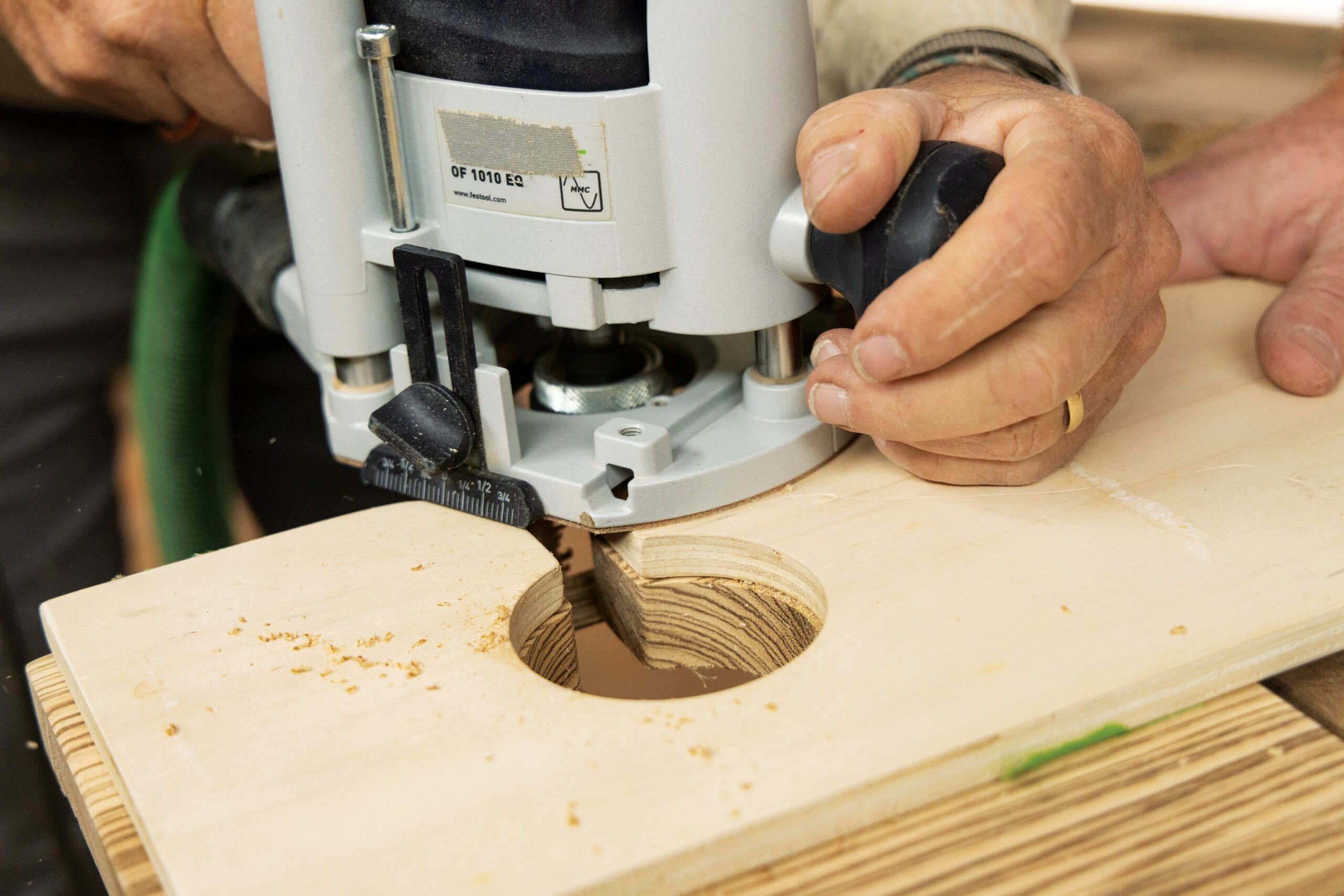
Chuck a templating bit into your router, and adjust the bit to make a 1⁄8-inch-deep cut. With the notch facing toward you, set the router on the left-hand side of the opening and run it clockwise around the template. Continue routing in 1⁄8-inch increments until you’ve cut all the way through the tray. Tap the template free with a hammer.
Step 10: Attach the Cleats for the Tray
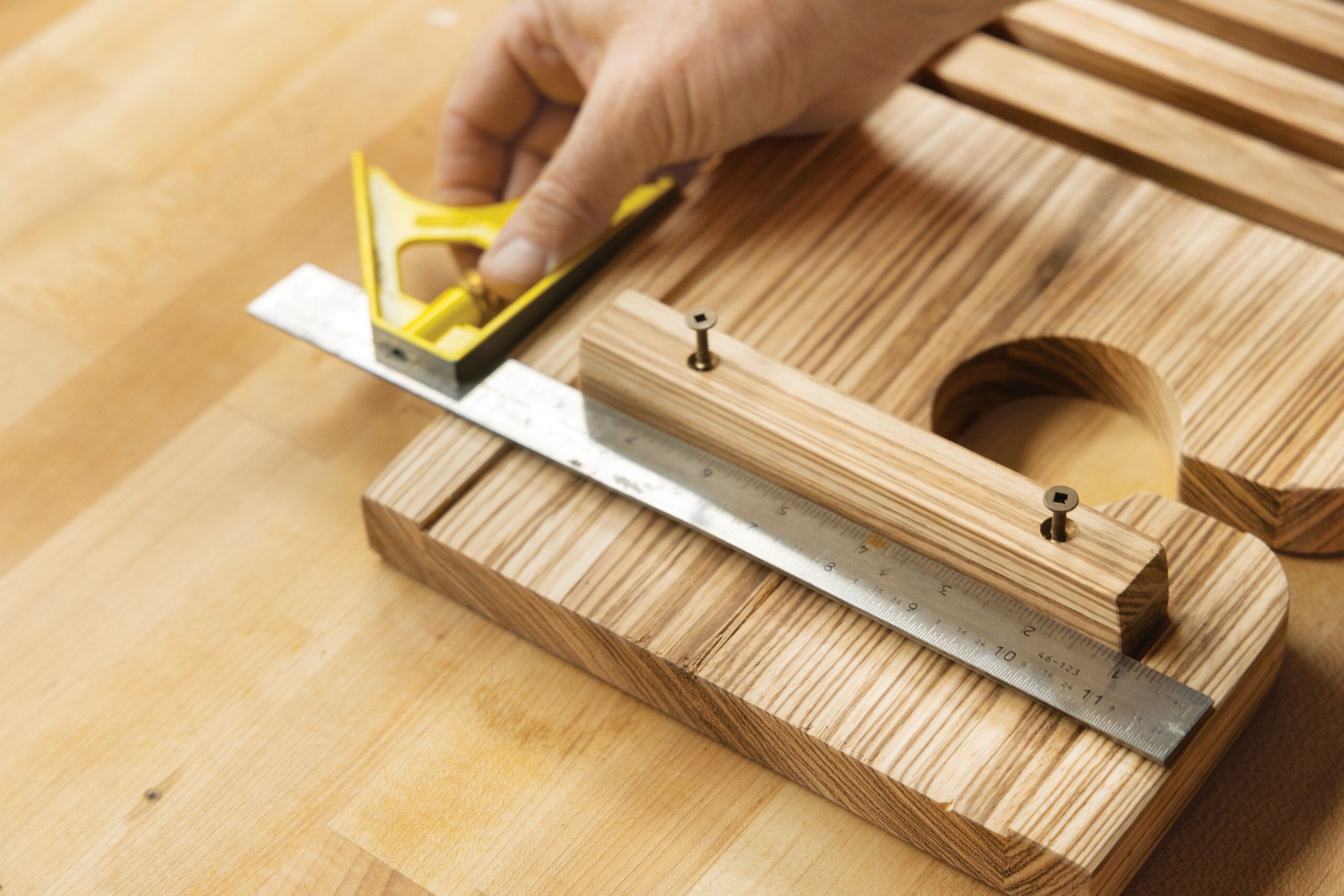
Attaching cleats will stabilize and balance the tray across the bathtub. Chamfer the bottom edges of the cleats, then drill pilot and counterbore holes 1 inch from the ends. Position the cleats according to the width of your bathtub. Center the cleats on the bottom of the tray, and attach with 1-and-1/4-inch-long screws.
Step 11: Give Your Tray a Final Sanding
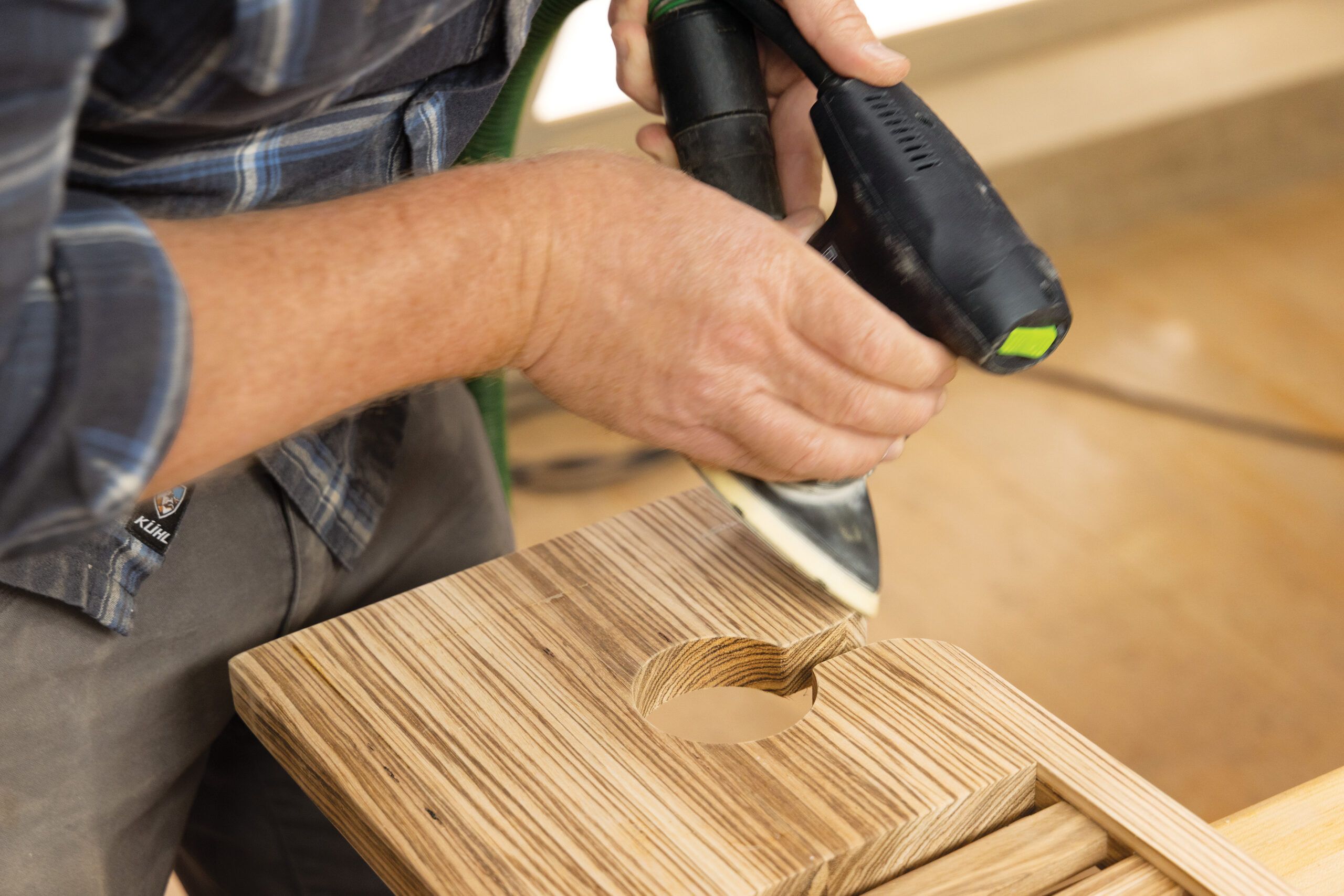
Use a detail sander with 220-grit to soften sharp edges in tight spots. Follow with a light hand-sanding with 220-grit sandpaper.
Step 12: Apply Your Finish to the Bathtub Tray
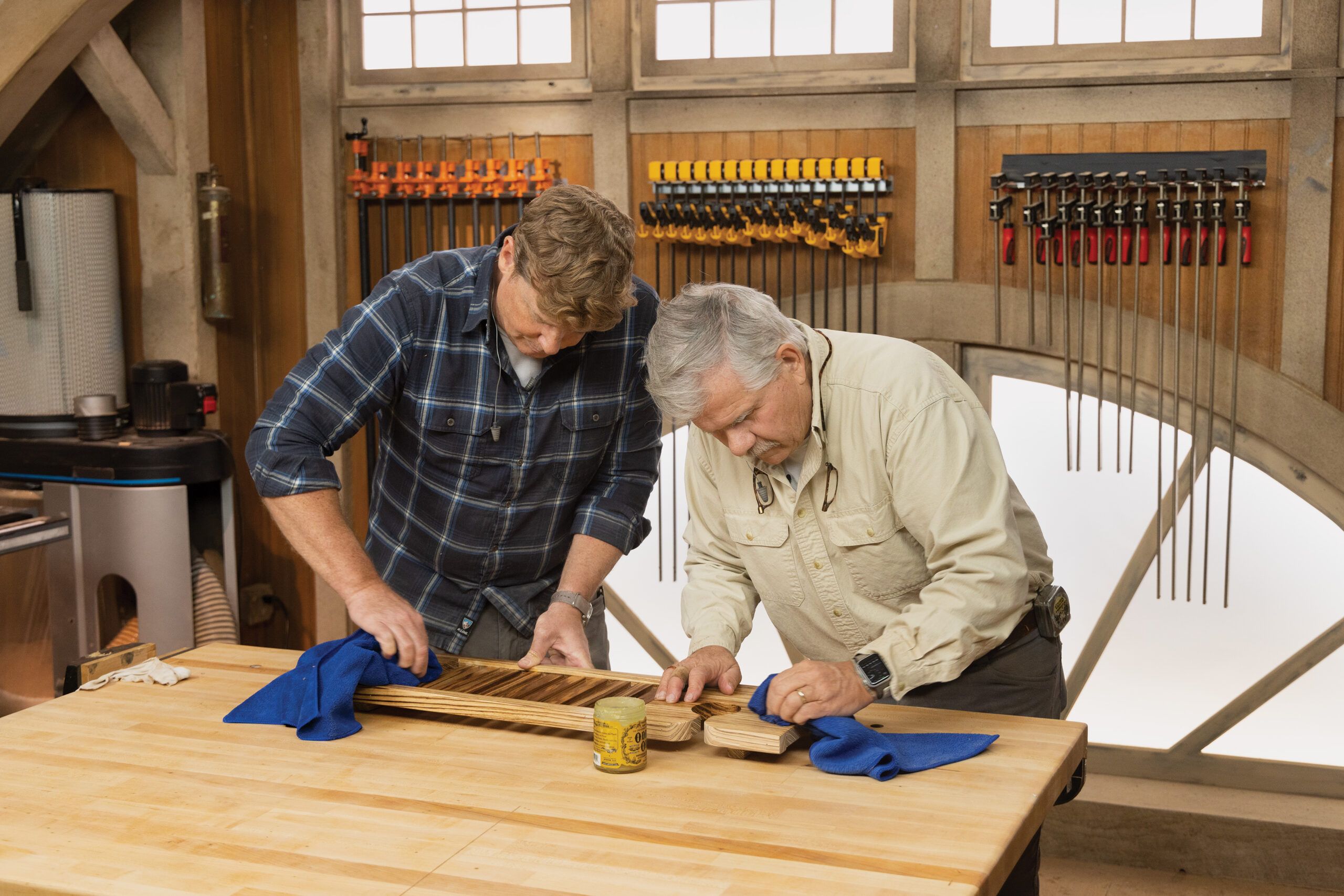
Your last step is to apply a water-resistant finish. Choose a finish that complements your wood choice and is durable. Here are some suggestions:
- Oil: Offers a natural look and is easy to reapply
- Oil/varnish blend: Provides a balance between penetration and surface protection
- Polyurethane: Offers excellent water resistance and durability
- Spar varnish: Typically used for marine applications and works well in high-moisture areas
To apply your finish, wipe it on, give it a few minutes to soak in, and then wipe away the excess.
Incorporating Design Elements Into Your Bathtub Tray
To further personalize your bathtub tray, you can add decorative inlays, such as mother-of-pearl or metal strips. You might also want to include custom engravings or wood burning to add a unique touch.
Decorative Inlays
Follow the steps below to add an inlay:
- Select the inlay material: Choose your material, which might include mother-of-pearl, metal, or contrasting wood.
- Create the inlay design: Sketch your design on the tray’s surface.
- Carve out space: Use a small router or chisel to carve out space for the inlays.
- Secure the inlays: Use epoxy resin to secure the inlays in place.
Custom Engravings
Engravings can add a personal touch to your tray. Sketch the design or text you want to engrave, then use a wood-burning tool to follow the design and add your engraving.
